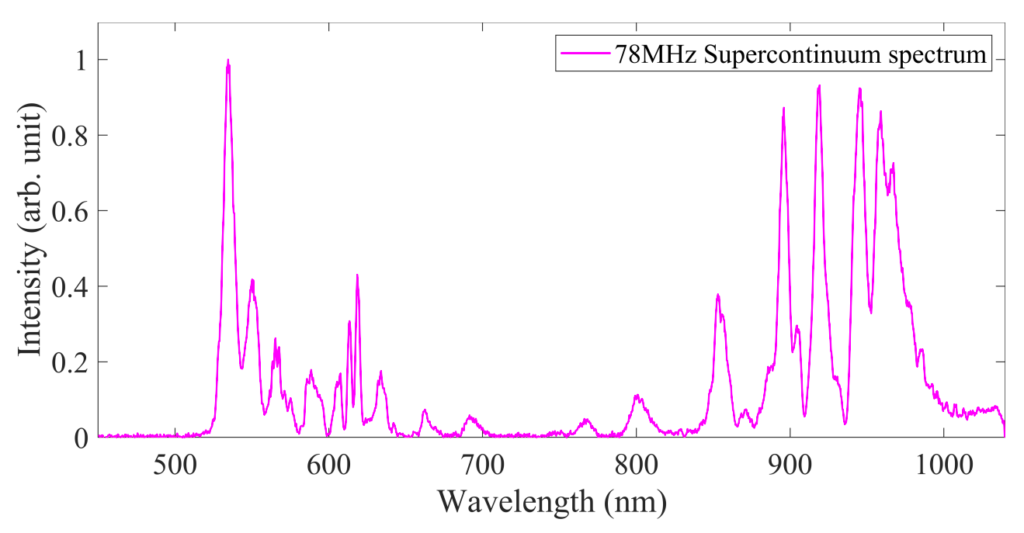Introduction to Self-reference Comb Laser


A comb laser is a type of laser that generates a series of evenly spaced optical frequencies. It is called a “comb” because the resulting spectrum resembles the teeth of a comb. The gain medium of our self-reference mode-locked frequency comb laser is Ti:sapphire crystal. Experimentally the Ti:sapphire crystal absorbs 532 nm green light from Verdi laser and emits infrared light at about 800 nm.
The frequency domain representation of a frequency comb is a series of delta functions spaced according to f=mfrep+fceo, where m is an integer, frep is the repetition rate of the mode-locked laser, fceo is the carrier-envelope offset frequency.
Fig.1 shows a self-referencing technique (f-2f technique) which is used to measure the carrier-envelope offset frequency. A supercontinuum fiber extends the spectrum range to the wavelength of 1064 nm and 532 nm (which is shown in Fig.2). Light at the higher-wavelength side of the broadened spectrum is doubled using second-harmonic generation in a nonlinear crystal (LBO). To measure the beat signal, in additional to allowing two beams to coincide in space, coincide in time is also needed. Thus, a translation stage is required to adjust the delay of one of the pulses.
One important application of comb lasers is in optical frequency metrology, where they are used to generate a precise and stable series of optical frequencies that can be used as a reference for measuring the frequency of other lasers or atomic transitions. Comb lasers have also found applications in high-speed communication, spectroscopy, and other fields.